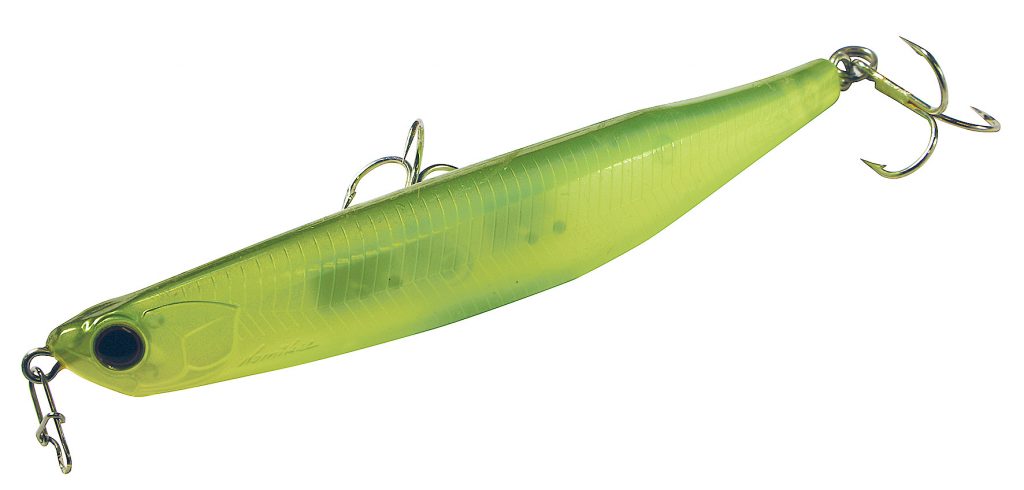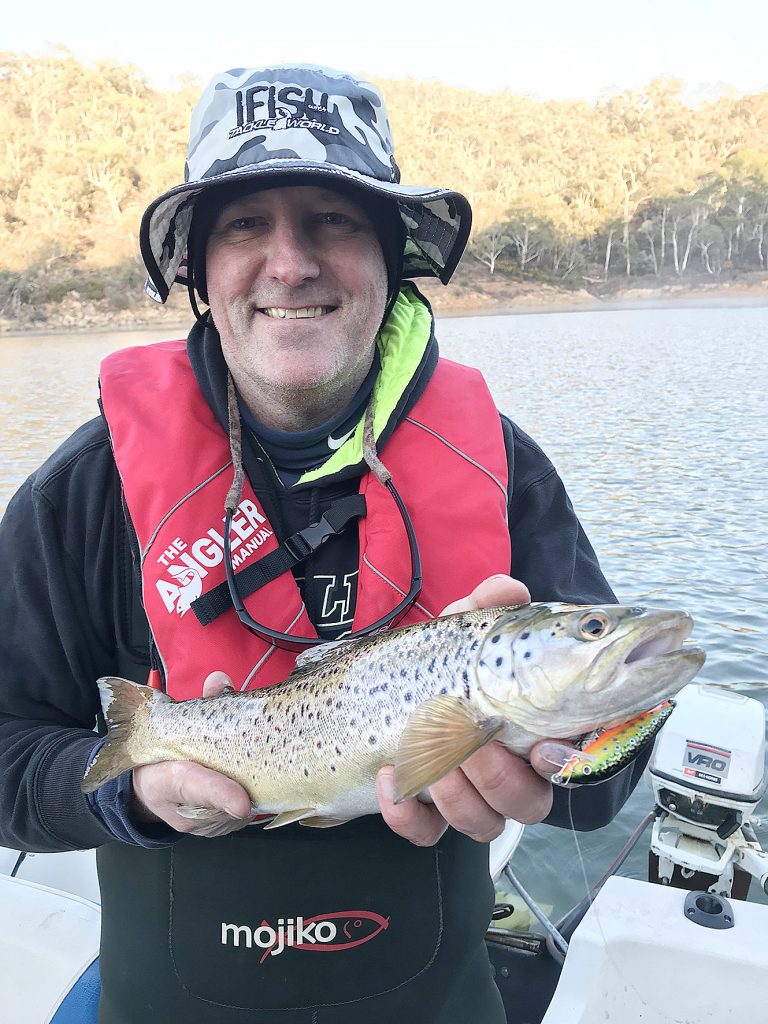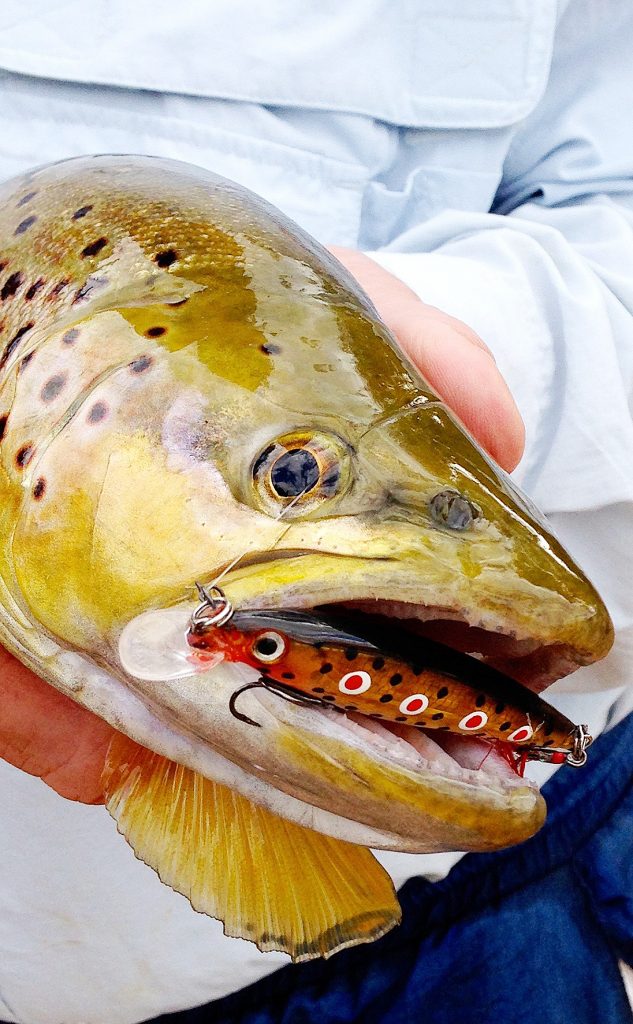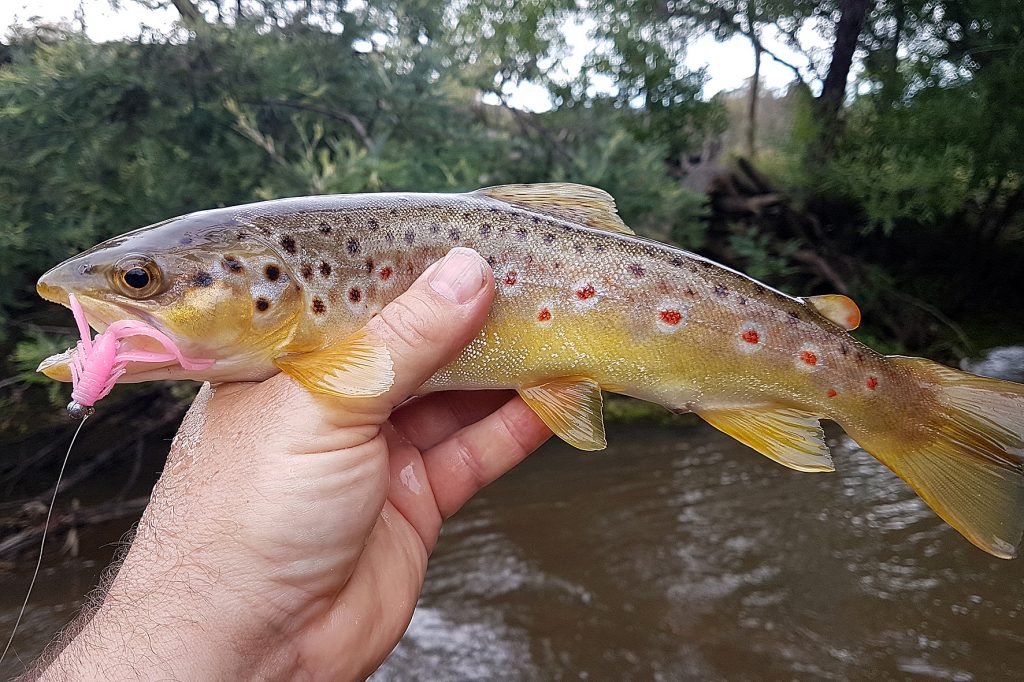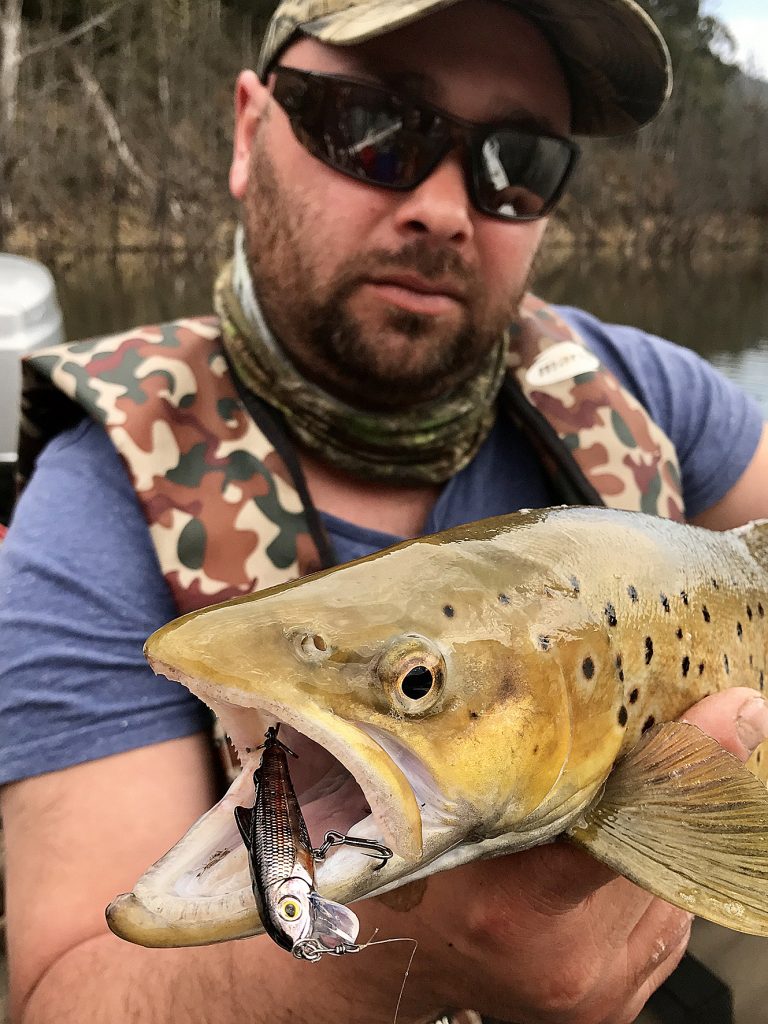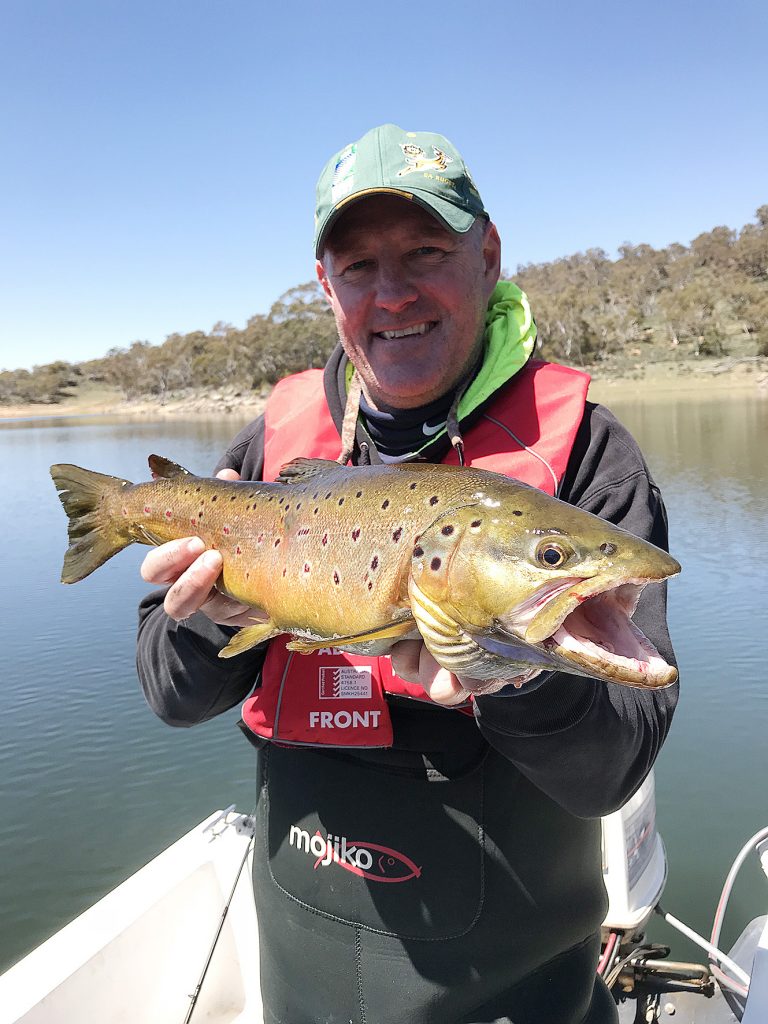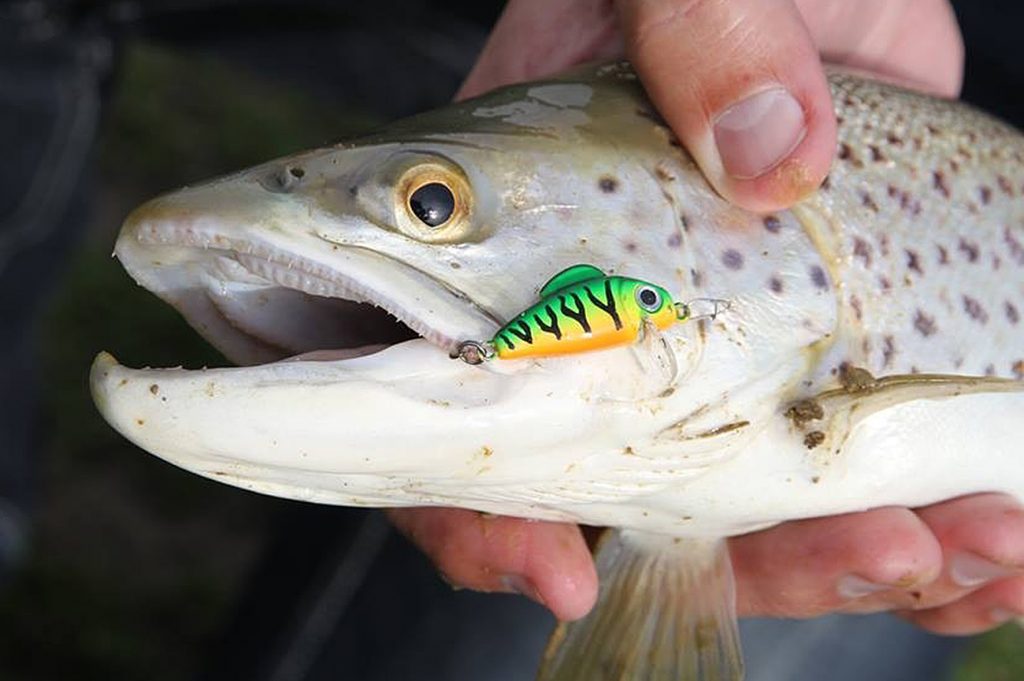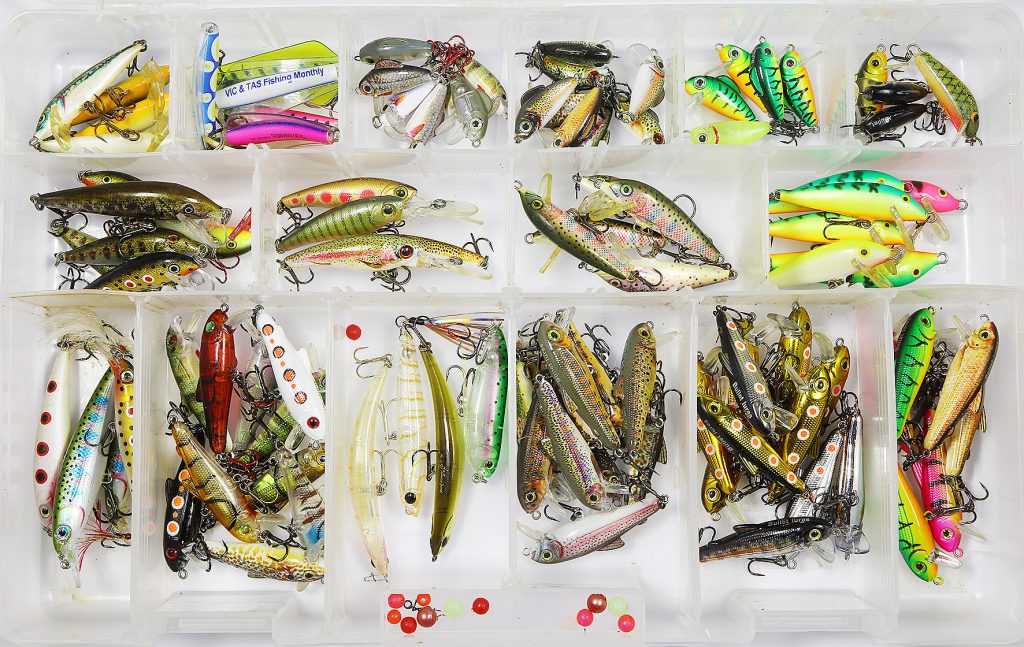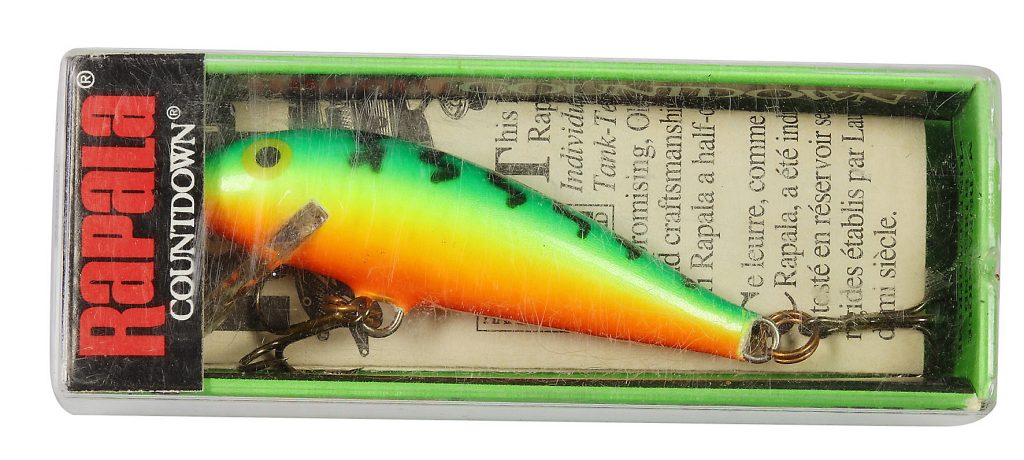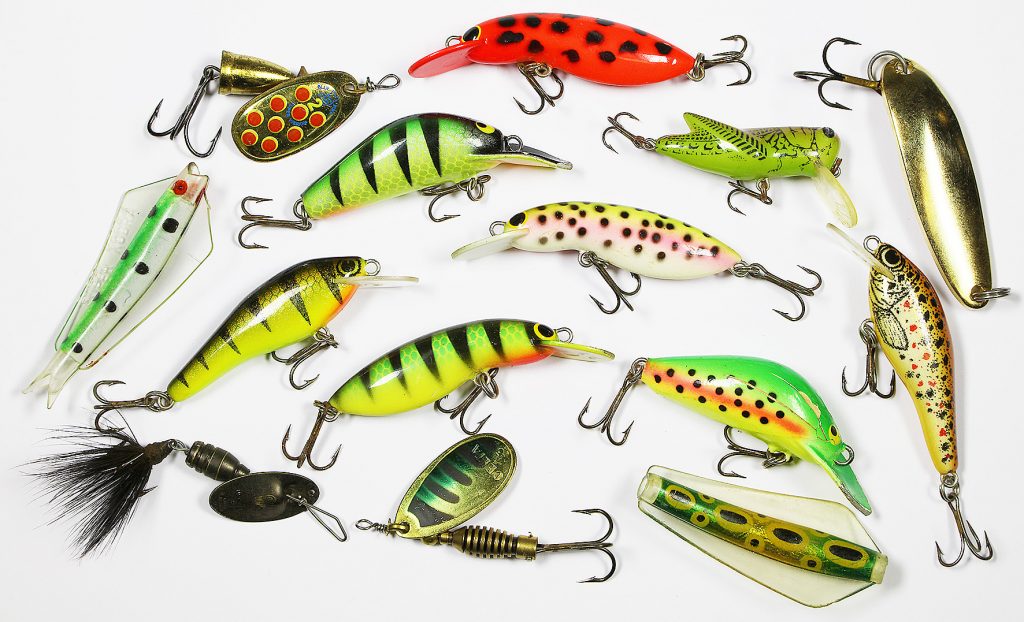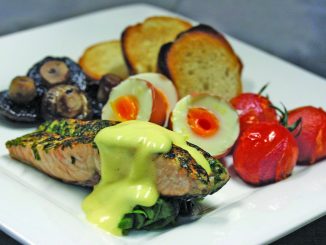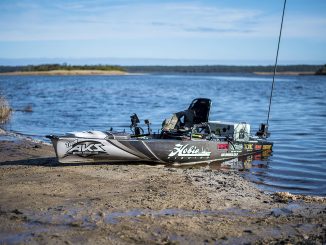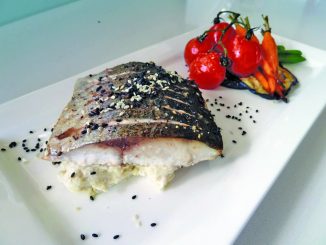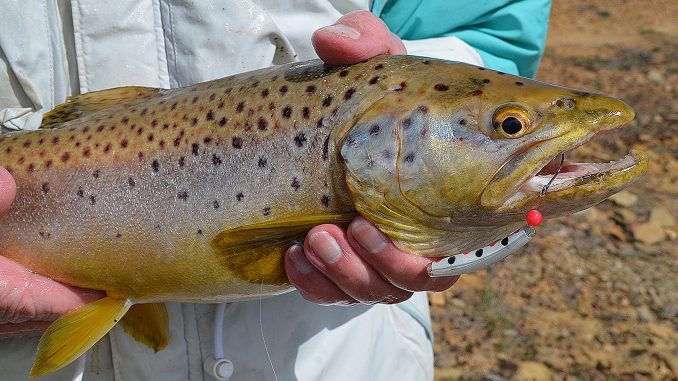
by Peter Jung •
Inspired by the ramblings of Rupe (Rupe is Fishing) on the styles of lures he uses to target Murray cod and Australian bass, I felt the urge to jump on the computer and do the same thing on one of Australia’s favourite introduced species – trout.
The fourth of May 1864 saw the first successful hatching of brown trout eggs in Australia. This was the result of a huge endeavour to transport live ova from England. This successful hatching in the Plenty River in Tasmania became the primary stock of brown trout for Australia and New Zealand. It was some 30 years later that rainbow trout were also introduced to Australian waters from North America via New Zealand.
Although an introduced species, there has been less heated debate on how much their introduction has affected the ecosystems of the waterways they inhabit. There is no doubt they have done so, but certainly not in the same manner as European carp and English perch have.
In this humble angler’s opinion they have become an integral component of the recreational fishing scene in Australia, and as long as a balance can be found where our native species and trout can coexist the industry can preserve the economic value that has been created as well as celebrating what anglers have enjoyed since their introduction in 1864.
As trout require cool water, their key strongholds are in the New England region of NSW, down through the high country of NSW and Victoria, around through into South Australia and southern Western Australia. Tasmania is recognised by many as the prime location to catch wild fish and has anglers from around the world visit its shores. Significant stocking efforts ensure many lakes in NSW and VIC are fantastic fisheries and provide a huge economic benefit through the anglers that visit. Prime examples are Toolondo in Victoria and the Snowy Mountain lakes like Eucumbene and Jindabyne.
Fishing methodology
Lure styles and trends in Australia tend to be dictated by overseas markets. Lures that are designed for other species tend to be adapted to targeting our Australian fish. In the case of trout, this is very different. European and American markets also have dedicated trout fisheries and lures to suit. Major brands like Rapala and Rublex have been part of a trout angler’s arsenal for as long as I can remember and, while they can also be adapted to other species, they are lures designed to target and catch trout.
There are some very switched-on Australian lure-makers (must be a freshwater thing) that have been around forever and produce highly effective lures for the trout market. Tasmanian Devils are the first to pop into my head from Wigstons Lures in Tasmania. Has any lure caught more trout than a Tassie Devil since the late 70s? There are many more as you read on.
Many of my formative years casting lures for trout were spent walking the banks of the Murrumbidgee River between Canberra and Cooma as well as many of the smaller creeks that feed into it. It was a huge learning curve and very rewarding. There were no mobile phones back then, so not many images exist, but the memories are etched into my brain and my love for chasing trout will never be lost.
I have to say it is a shame that these areas now hold little or no trout any more. Drought knocked out fish stocks and huge numbers of carp have taken over. NSW Fisheries’ stocking focus seems to be on the lakes and not boosting fisheries that inspired a generation or two of anglers. It is great to see that the native species are still going strong, but the trout that swam with them are now few and far between.
However, I digress; let’s get onto talking about the lures to target them.
Spinners
My first recollection of fishing for trout with lures was with a Rublex Celta in the no. 1 and 2 sizes (5g and 7g) in the gold blade with red or green markings. These simple lures are basically a blade that rotates around a body with a treble at the rear. They, like all of this type of lure, were great for a young angler to use. They had enough weight to cast with little difficulty and the retrieve was simple – wind fast enough that the blade spins.
The advantage of a spinner is that in a river fishing scenario it can be fished upstream, downstream, across current, shallow or deep; it doesn’t matter. As long as you get the blade turning it will catch a fish. The flash of the blades seemed to mesmerize the fish and certainly hooked this angler on lure fishing.
It didn’t take long for other similar lures to find their way into my tackle box and are still, like the Celtas catching fish today. Blue Fox Vibrax lures are a similar style, but come in a vast range of colours and have a bell-shaped body that emits added vibration and sound. The other lure that has stood the test of time is the Rooster Tail. A little bit of feather added to the treble and a good colour range made it a must-have.
There is a myriad of spinners now available and unsurprisingly all the above spinners are still readily available. Some others to look out for are the Juro Alpine and Sonic Spinners or the Gillies Feathertail. The downside to this style of lure is casting distance and although they still caught plenty of fish around the margins of the Snowy Mountain lakes, as an angler you always wonder if you would catch more fish if you could cast that little bit further.
Pete’s Tackle Box – Spinners
Rublex Celta
Blue Fox Vibrax
Rooster Tail
Sonar Spinner
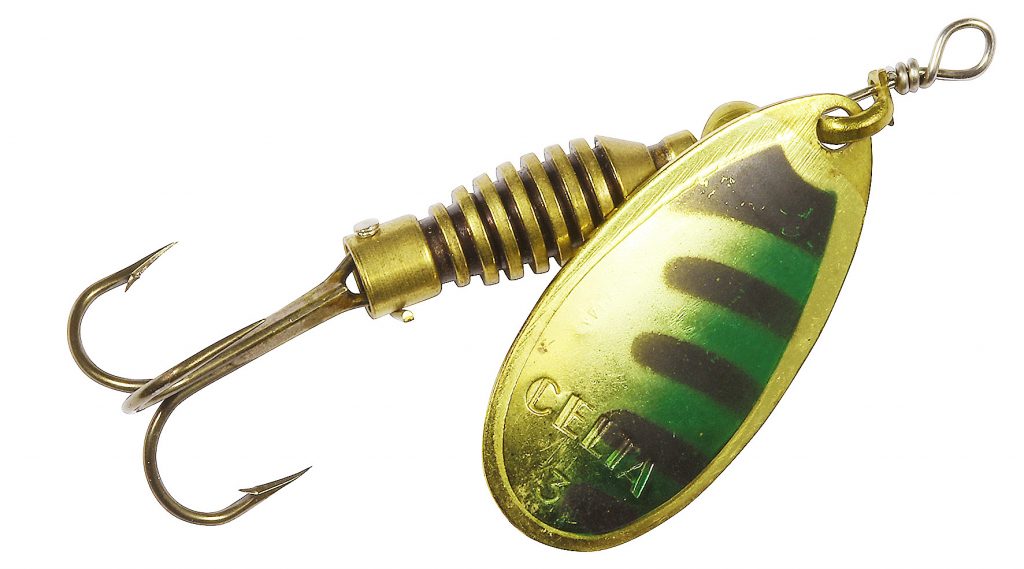
Spoons and slugs
To have the ability to cast further added a new dynamic to lures for trout and spawned from this for me was a lure called a Baltic minnow. Made in Australia it was a lure with plenty of weight and minimal action. People fishing the mountain lakes couldn’t get enough of them.
They could now cast three times as far as they ever had, get to the bottom quickly and wind in quickly to maximise any action in the lure. The strikes when they came were vicious, which made using them lots of fun. However they were limited to lake use and other options that had the castability, but also had potential in the streams as well.
Enter spoons. They come in all shapes, sizes and weights, with the added dynamic of a wobbling/fluttering action. Lake anglers flocked towards lures like the Pegron Minnow and the Wonder Wobbler while river anglers were drawn towards lures like the Wonder spoon or IMP Spoon as I know it.
The action of the lures also made them favourites with anglers who trolled for trout, as it removed the need to have attracting devices in front of their lures.
There are plenty of options when it comes to what is available through your local tackle store. One that has come to my attention is the Kroc Lure from Australian producer Wonder Lures. There wouldn’t be too many Victorian trout anglers that don’t have one of these in their tackle box.
Pete’s Tackle Box – Spoons
Pegron Minnow
Wonder Kroc Lure

Winged lures
One of the biggest contributions Australian lure-makers have made to trout fishing has been winged lures. They are a great combination of a slug and a spoon and the three brands I am aware of would have accounted for millions of fish captures. Those three brands are Tillins Cobra, Wigstons Tasmanian Devil and the Johnson Kobra. All are variations on a theme and all are fish-catching machines in their own right. They have great castability, a wicked side-to-side action and are very affordable for every angler.
Tassie Devils are most probably the most recognizable these days with significant wall space designated to them in most tackle stores where trout are found nearby. Their colour range is massive and the addition of coloured wings in recent years has been very popular.
To improve the hook-up rate, remove the wire insert and treble and put your leader straight through to a treble of your choice. Put a coloured bead between the lure body and the treble/inline single hook to avoid knot damage.
If you are trolling for trout, these are a must-have lure.
Pete’s Tackle Box – Winged lures
Wigstons Tasmanian Devil in colours, clown, tinkerbell, yellow wings, Willy’s special, fire tiger

Diving minnows
Diving minnows changed the way I fished for trout. My initial foray into diving minnows was using Rebel Crawfish and Crickhopper lures in my local streams. It was my version of matching the hatch. I had enough success to head to my local tackle store (Anglers Art in Phillip ACT) in search of more options. What caught my eye were the Rapala CD3 and CD5 ranges as well as the floating versions.
There were lifelike rainbow and brown trout colours as well as a perch colour that tickled my fancy, but the odd one out was the fire tiger colour. ‘No way a trout would eat that’ was my initial thought, but I had to have one anyway. Luckily I did, because it smashed them. These became my go-to lure – the floating version for the streams and the sinking version in the lakes. This was the beginning of the influx of a myriad of lures to fill a similar purpose.
Baby Merlin Lures and McGrath Attack minnows were a couple of the Aussie options and now there are so many lures that can be adapted to trout techniques that you are spoilt for choice. While many tend to lean towards Japanese-made lures, which is not hard to understand as their quality is outstanding, but I must say I still lean towards the latest Rapala offerings (X-Rap CountDown and BX Minnows) if I am going to spend that sort or money.
The other standouts new offerings are the Bullet Minnow and Five-O Minnow from Bullet Lures and the Tango Shad from Zerek, if you want something that dives a little deeper. Both brands have sinking and floating versions, which is important depending on the waterway you are fishing.
One tip that I will give you is it is vital to have natural colours in your collection (spotted dog, brown and rainbow trout are must-haves), but have a few out-there colours like chartreuse or fire tiger, as there will be days where these shine above all.
Pete’s Tackle Box – Diving Minnows
Rapala CD3 and CD5
Rapala X-Rap Countdown 5cm and 7cm
Bullet Minnow
Bullet Five-O Minnow
Zerek Tango Shad
Geecrack Suguri 60
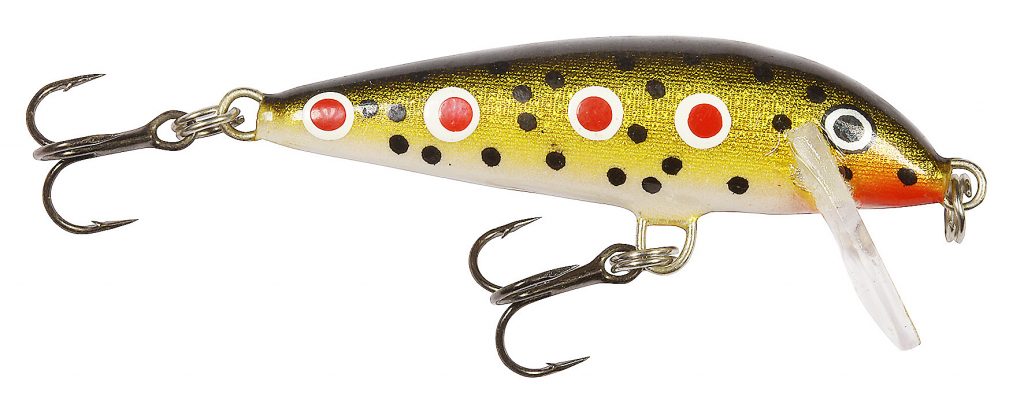
Soft Plastics
Soft plastics have become an integral part of any lure angler’s arsenal. Your ability to adapt to the task at hand by adjusting the weight of the jighead or changing the size and style of the plastic makes them almost the ultimate fishing tool. There are so many different offerings available that can replicate anything from a small fish to an insect. The old match the hatch principal comes into play again.
My introduction to targeting trout with plastics has come later in life. The variety I have mentioned didn’t exist in my formative fishing years, unless you considered cut-down lizards and worms designed for largemouth bass or Mr Twisters as the ideal trout lure!
My initial forays revolved around Berkley PowerBait and Gulp soft plastics. For some reason trout love the PowerBait dough baits that are available, which I put down to the scent in it, so it stands to reason that plastics with the same in them would work and they certainly do.
I also leaned towards paddle-tail or curly-tail styles. I wanted the lure to be working for me throughout the retrieve. I have stuck with natural colours and those shapes, but my mate Andy blew my theory out of the water when we fished last. He fished a Berkley Gulp Minnow in chartreuse and white and was unstoppable. At least I got the Gulp component right.
Insect and insect larvae imitations come into their own when fishing rivers and creeks or during the low light periods of the day in lakes. Strike Tiger lures from Tasmania do a 1” nymph and a number of other variations that are well worth getting your hands on.
I would like to quickly go back to colours. Like the minnow lures, natural colours are a must-have, with gold and black at the top of the tree, but don’t forget to have something a little out-there as well.
Pete’s Tackle Box – Soft Plastics
Berkley T-Tail Minnow
Berkley Jigging Grub
Strike Tiger 1” nymph
Strike Tiger 2” Hawg
Zerek Live Flash Minnow Wriggly 70mm
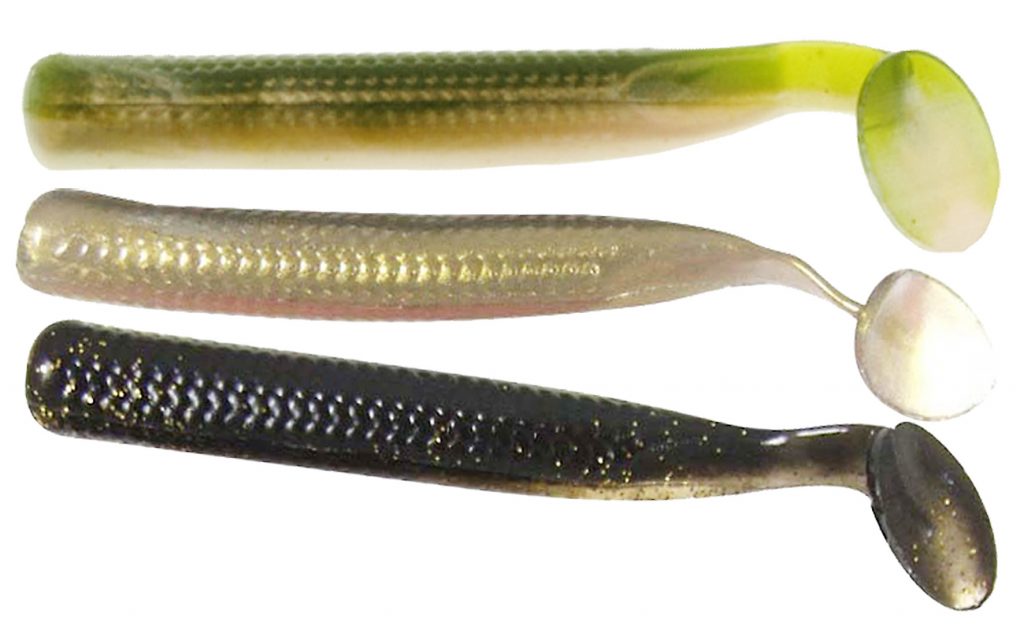
Jigheads and weights
Fishing with soft plastics can be frustrating and the most frustration stems from which jigheads you use and the weight of them. I spoke to Robbie Alexander about this and he said that it was the question he is asked the most.
Weight simply comes down to the depth of water and how far you need to cast. For me the most important thing is the hook. You want a fine gauge hook that is super sharp; it is vital that you get good hook penetration (even from the lightest of bites) as mister trout seems to find a multitude of ways to get off, especially via aerobatics.
My preference is TT Tournament jigheads; there is a huge range of sizes and weights and I use the finest gauge possible. Another that has impressed me on recent trips is the Mustad Darter jighead; the range isn’t overly complicated and, while they’re not a superfine gauge, they make up for it with how sharp they are.
Pete’s Tackle Box – Jigheads
TT Tournament Jigheads
Mustad Darter Jigheads
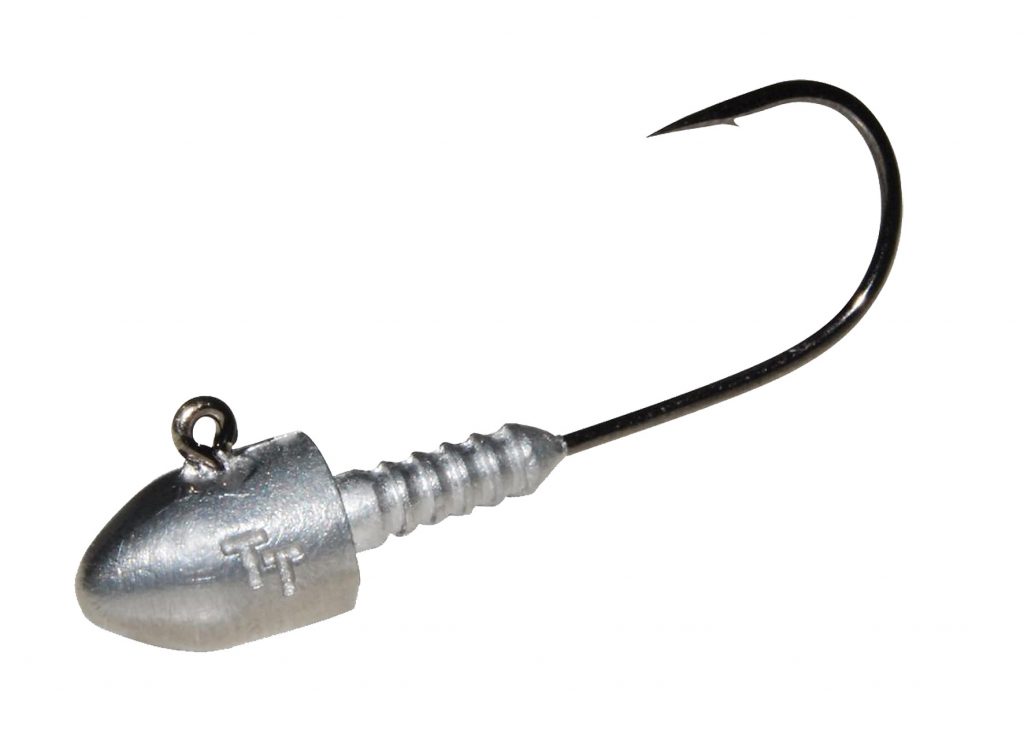
Surface lures
If I had of written this feature a month ago I don’t think I would have had a surface lure component. What changed, I hear you ask? I had the pleasure of watching a couple of young fellows casting OSP Bent Minnows across a shallow bay at Lake Jindabyne. The trout seemed to be fighting with each other to eat the lure. I saw almost a repeat performance in the Pondage below Lake Eildon – this time using Bassday SugaPens. This is a ‘watch this space’ situation for the author – there is no doubt I will be giving it a try next time I have the opportunity.
I hope that this has you itching to check out the lures in your local tackle store. I know I certainly want to. It has been a blast putting this together, as it has been a while since I went through my old trout tackle boxes. Some lures are still in their boxes and others show the markings of success. The best part for me is that my next outing to go and catch a trout is just around the corner. The fish in Lake Jindabyne won’t know what hit them; there will be plenty of my old and my new lures cast at them.
Pete’s Tackle Box – Surface Lures
OSP Bent Minnow
Maria Pencil
Bassday Sugapen
